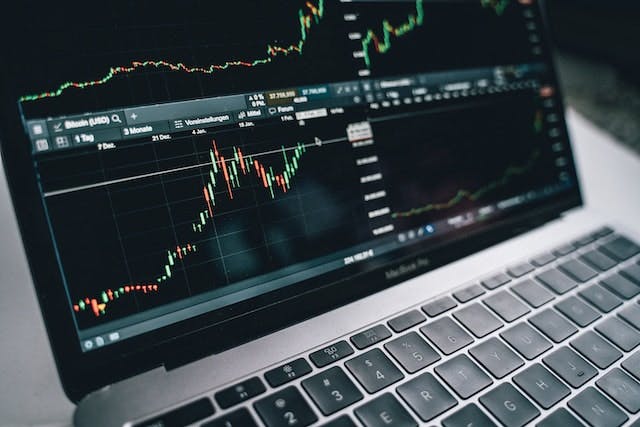Growth Slows Sharply Last Quarter to 1.6 Percent Pace, Reflecting an Economy Pressured by High Rates
The state of the economy is seizing Americans’ attention as the election season has intensified. Although inflation has slowed, to 3.5 percent from 9.1 percent in 2022, prices are well above their pre-pandemic levels.

WASHINGTON — The nation’s economy slowed last quarter, growing at an annual rate of 1.6 percent in a sign that the high interest rates may be taking a toll on borrowing and spending.
Thursday’s report from the Commerce Department said the gross domestic product — the economy’s total output of goods and services — decelerated from its brisk 3.4 percent growth rate in the final three months of 2023.
Consumers continued to drive growth last quarter but slowed their spending. Growth was also held back by businesses reducing their inventories.
The state of the economy has seized Americans’ attention as the election season has intensified. Although inflation has slowed sharply, to 3.5 percent from 9.1 percent in 2022, prices remain well above their pre-pandemic levels.
Republican critics of President Biden have sought to pin responsibility for high prices on Mr. Biden and use it as a cudgel to derail his re-election bid.
And polls show that despite the healthy job market, a near-record-high stock market and the sharp pullback in inflation, many Americans blame Mr. Biden for high prices.
The Commerce Department had been expected to report Thursday that the gross domestic product — the economy’s total output of goods and services — grew at a slow but still-decent 2.2 percent annual pace from January through March, according to a survey of forecasters by the data firm FactSet.
Some economists envisioned a stronger expansion than that. A forecasting model issued by the Federal Reserve Bank of Atlanta pointed to a first-quarter annual pace of 2.7 percent, propelled by a 3.3 percent increase in consumer spending, the principal driver of economic growth.
The slowdown was anticipated to reflect, in large part, the much higher borrowing rates for home and auto loans, credit cards and many business loans that have resulted from the 11 interest rate hikes the Federal Reserve imposed in its drive to tame inflation.
Even so, America is slated to outpace the rest of the world’s advanced economies. The International Monetary Fund has projected that the world’s largest economy will grow 2.7 percent for all of 2024, up from 2.5 percent last year and more than double the growth the IMF expects this year for Germany, France, Italy, Japan, the United Kingdom, and Canada.
Americans, who emerged from the pandemic recession with plenty of money in reserve, have been spending energetically, a significant trend because consumers account for roughly 70 percent of the nation’s GDP.
Between February and March, retail sales surged 0.7% — almost double what economists had expected.
Businesses have been pouring money into factories, warehouses and other buildings, encouraged by federal incentives to manufacture computer chips and green technology in the United States.
On the other hand, their spending on equipment has been weak. And as imports outpace exports, international trade is also thought to have been a drag on the economy’s first-quarter growth.
The IMF’s managing director, Kristalina Georgieva, cautioned last week that the “flipside” of strong American economic growth was that it was ”taking longer than expected” for inflation to reach the Fed’s 2 percent target, although price pressures have sharply slowed from their mid-2022 peak.
Hiring so far this year is even stronger than it was in 2023. And unemployment has remained below 4 percentfor 26 straight months, the longest such streak since the 1960s.
“Overall, US economic activity remains resilient, powered by consumers’ ongoing ability and willingness to spend,” said the chief economist at the tax and consulting firm EY, Gregory Daco. “A robust labor market, along with positive real wage growth, continues to provide a solid foundation.”
Though the Fed’s policymakers signaled last month that they expect to cut rates three times this year, they have lately signaled that they’re in no hurry to reduce rates in the face of continued inflationary pressure.
Now, a majority of Wall Street traders don’t expect them to start until the Fed’s September meeting, according to the CME FedWatch tool.
Associated Press
